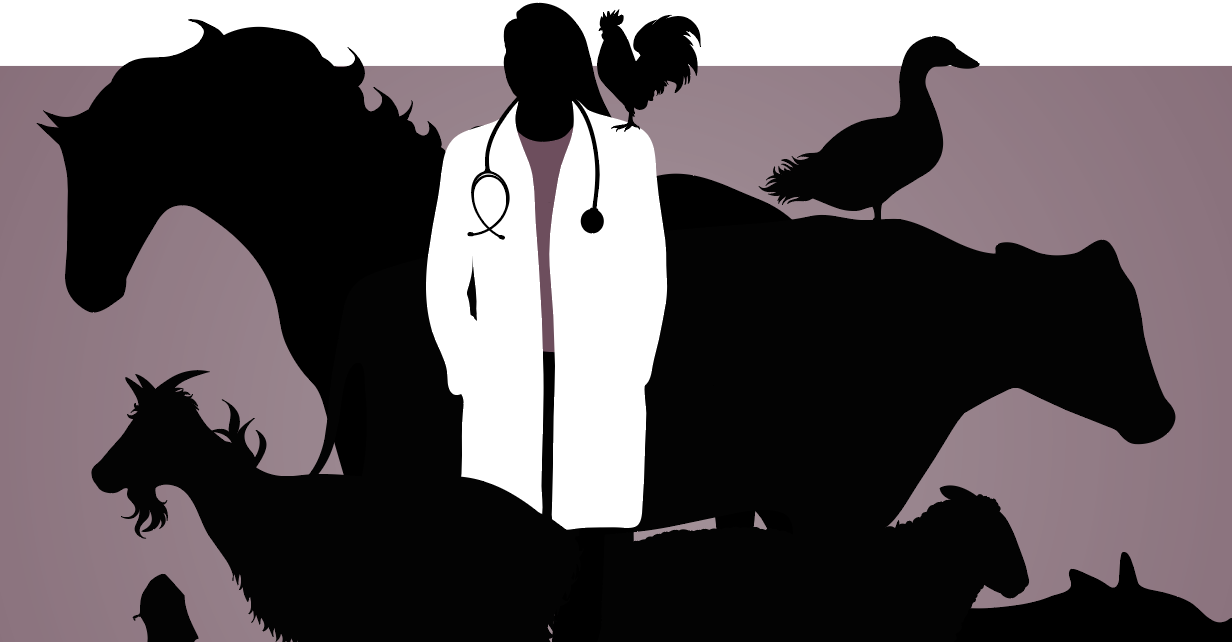The animal determinants of human health
Health for all is an achievable goal, but only if health governance involves and partners with those working
in the animal health sector
If health is a political choice, health policies should be designed taking into account the One Health concept, given that human health, animal health and respect for the environment are closely intertwined. We all remember events such as severe acute respiratory syndrome and the Middle East respiratory syndrome, and outbreaks of Ebola or influenza. The current COVID-19 pandemic once again highlights the threat to human health posed by pathogens circulating in the animal kingdom. In tackling the consequences for humans we must not lose sight of the need to invest in surveillance and control of these pathogens at their source in animals.
We need to address a crucial issue of good health governance, including in the animal health sector. For some 15 years the OIE has been offering its 182 member countries a highly developed programme of evaluation of national veterinary services, known as the Performance of Veterinary Services Pathway (PVS). This is designed to identify strengths and weaknesses as well as any gaps with respect to a standardised frame of reference on the quality of veterinary services, while taking into account each country’s strategic priorities.
The conclusions in the reports of the first PVS missions frequently pointed to a lack of collaboration between the public health and animal health sectors. As a result, the World Health Organization and the OIE have been working together to develop joint programmes aimed at integrating the One Health concept by identifying areas of common ground between the OIE’s PVS Pathway, a programme to help achieve compliance with OIE international standards, and WHO’s International Health Regulations Monitoring and Evaluation Framework, designed to support the capacity to respond to public health events. Furthermore, OIE experts are regularly invited to take part in joint external evaluation missions conducted by the WHO in its member countries, to ensure that veterinary services’ activities relating to public health are taken into account.
Broad collaborations
This bilateral collaboration is strengthened by far wider collaboration, which I have keenly defended before numerous bodies, namely the cooperation made up of the OIE, the WHO and the Food and Agriculture Organization. The complementarities and the synergies developed among our respective competencies and networks are notable assets when it comes to controlling zoonoses and tackling antimicrobial resistance. This ‘Tripartite’, which began as a platform for joint action on several priorities (rabies, influenza and antimicrobial resistance) and has gradually extended to other fields, is now an institutionalised form of cooperation, a formal agreement having been signed by the three directors general in May 2018. This partnership has proven to be a determining factor, for example when the United Nations General Assembly turned its attention to the global governance of the fight against antimicrobial resistance and recognised the central role of these three organisations in meeting this major health challenge. We were able to demonstrate that, by working together, we were better equipped and that this union at a global level should be an example to follow at a national level.
In fact, this approach has proven particularly useful. Indeed, through our long-term joint commitments we have succeeded in promoting the One Health concept and the value of intersectoral collaboration. Many countries now have One Health committees that facilitate the exchange of information collected by each administration and ultimately improve the coherence of public action. The number of national action plans to tackle antimicrobial resistance drawn up during the past two years is tangible evidence of this.
The concept is now well understood – but it needs to be brought alive and sustained, with principles being turned into actions and then into results.
Although the successes are encouraging, major challenges remain. Even if progress has been made, in many countries veterinary services are not suitably structured and there is not the appropriate legislation to allow effective intervention. They also lack sufficient trained human resources and material resources. It is high time for veterinary services, which are on the front line when it comes to managing health risks that have their source in animals, to be recognised as key actors in health policies, and not merely technical services providing support for animal production sectors. They should also be seen as priority sectors for investment.
This explains why the OIE is committed to promoting its PVS programme among its financial partners as well as among policymakers. Disease control policies must be able to rely on cross-cutting competencies, and must have access to good-quality, sustainable networks: nation-wide epidemiological surveillance networks, networks of analytical laboratories, partnerships with the private sector (health professionals, technicians, the pharmaceutical industry, for example), mechanisms for dialogue with communities, and so on.
Lastly, to continue the work of improving global health governance and to consolidate our partnerships with the international organisations involved, especially the WHO and FAO, the forthcoming OIE Seventh Strategic Plan (which will be presented to the World Assembly of Delegates for adoption in 2021) clearly identifies our commitment to contribute to the achievement of the Sustainable Development Goals. Thus, the OIE and the veterinary services wish to affirm that they are partners on whom the international community can count, so that ‘Health for All’ can become an achievable goal.












